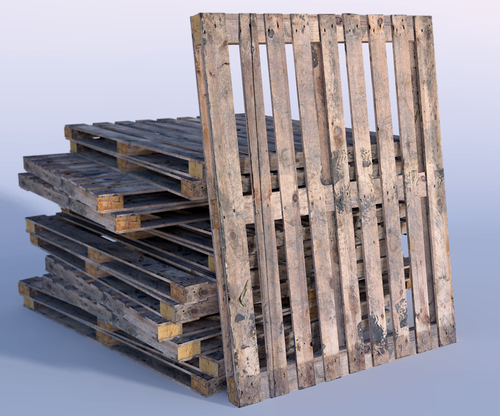Didn't you just love the summer holidays as a kid? Didn't they just stretch out in front of you like an eternity full of promise? Not so much for your mom or dad, though. Well, I think my mom must have gotten fed up of me after one week because she checked me into a summer activity school. I wasn't happy, I can tell you... until I got there. The supervisor opened a door into the largest junkyard I had ever seen, only this one didn't have cars, but wood. Everywhere you looked kids had been let loose and were building dens, climbing frames, towers, go-carts , you name it. The supervisor gestured towards a set of woodworking benches and beside them there were racks and racks of hammers, saws, chisels, planes, files, and many more items. "Help yourself," he said, "and you'll need plenty of these," as he shoved a huge tin of nails into my small hands. I think I was only six, but I didn't notice my mom leave.

Making assets for games is a bit like a young boy's dream activity holiday. You have all the wood you want, all the shiny new tools you need of every make, model and size, and a huge supply of nails. When you need more, the supervisor just fills your tin up. All we know about the monetary cost is that someone's paid for it all. The only limits are our time and ingenuity.
When you get the hang of modeling with SketchUp, you will be able to model more or less whatever you or your boss want. Time's the only limit. We can fill the world if we want to, and that's actually what it's all about. Your game needs to be like the real world, full of stuff, mostly junk. The asset stores unfortunately have mostly good stuff, when what you really want is bits of wood with nails sticking out, old tanks of decaying vegetables, buildings with plaster and tiles falling off. These things make your worlds real. You get these assets simply by taking pictures of the junk in your world, then transferring it to your game world through SketchUp. You might modify them a little too, to accentuate certain things. In this first modeling tutorial, you will learn how to:
- Model from your texture, not texture your model
- Extrude 2D shapes into 3D shapes with Push/Pull
- Use Copy and Move, and some hidden features of these tools
- Create groups and components to create quick duplicates
- Use most of the basic modeling tools in SketchUp
...and much more! You should pick up skills and techniques as you go along without really noticing. So let's get started!
You've already installed SketchUp and I hope you're dying to get started with modeling. The texturing part took a while to explain, but now you know what you're doing with textures, you'll always be well prepared for modeling tasks. The approach to modeling in this book is to use photo or image textures as a base, rather than modeling first and texturing later. It is a much easier approach than the traditional one, and well-suited to SketchUp. When you begin creating more advanced models and textures in Chapter 7, Quick Standard Assets, and Chapter 9, The Main Building—Inside and Out, you will also learn how to adapt photo textures in GIMP using the original photos as a base. Of course, if you're an artistic soul you can go on from there and create textures from scratch, but I suggest you first need to know how to do it this way before you venture out into that new world.
